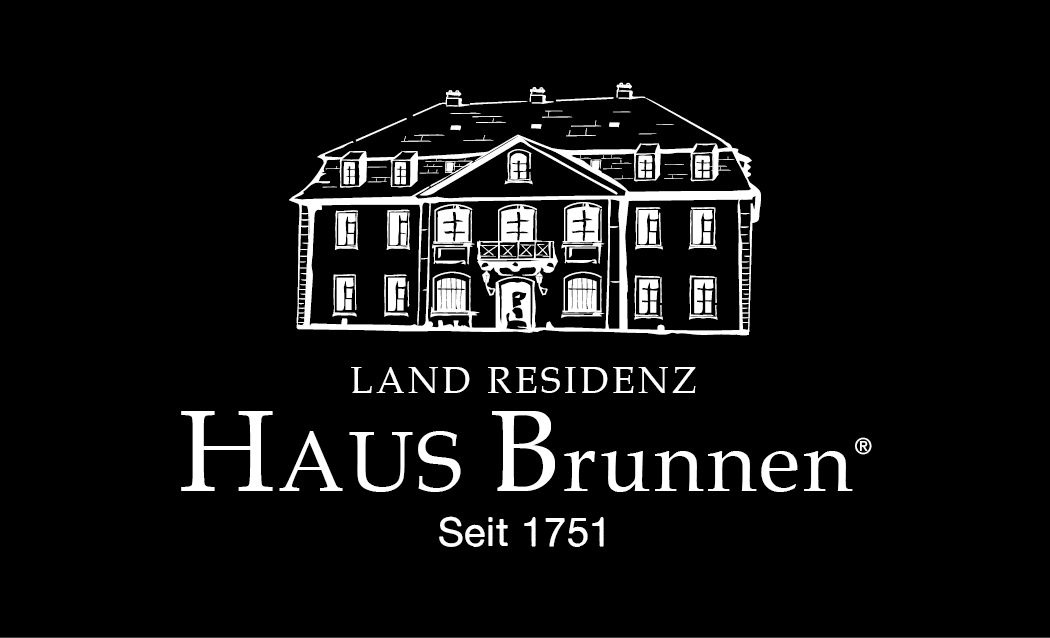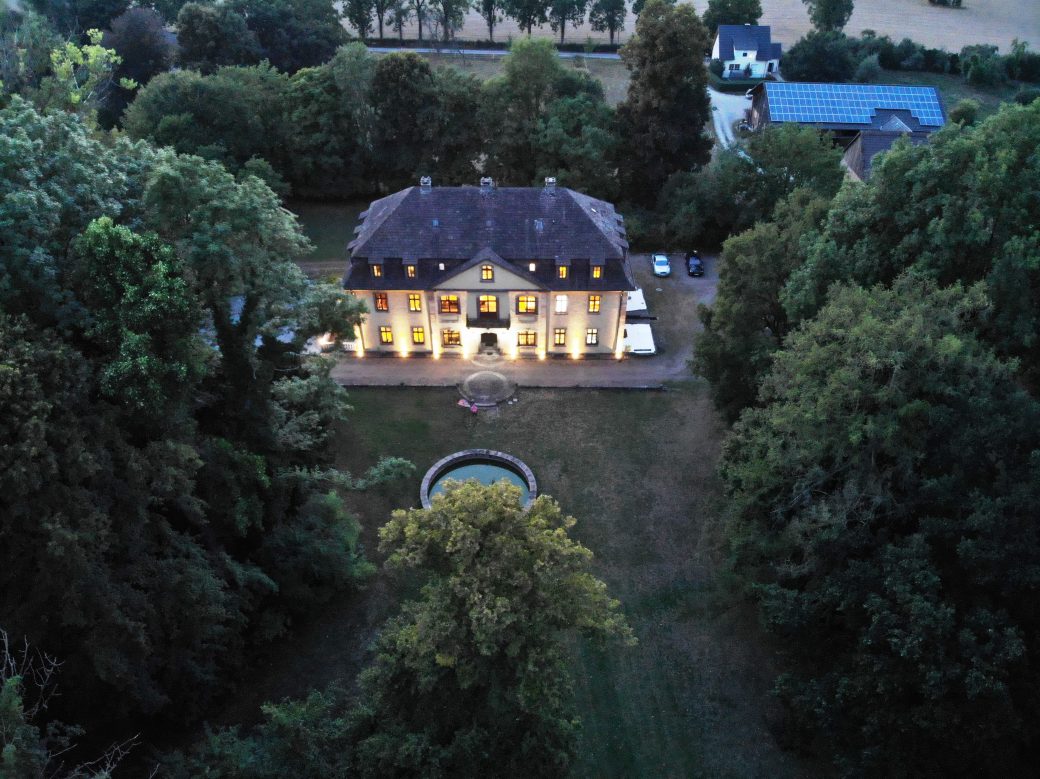Das Herrenhaus / The Manor House
Zwischen 1751 und 1753 wurde das erste Kurhaus in Westfalen, das Haus Brunnen, errichtet. Der Plan für den ursprünglich dreistöckigen massiven Bau wird dem Paderborner Barockbaumeister Franz Melchior Christoph Nagel zugeschrieben. Das verputzte barocke Herrenhaus war mit einem Sollinger Buntstein-Mansarddach versehen und mit Werksteingliederungen verziert, ähnlich den zeitgenössischen Schlossbauten. Ein großer Tanzsaal erstreckte sich bis ins ausgebaute Dach hinein. Das Haus diente eher als Sommerresidenz denn als Kurhotel. Im Jahr 1933 ließ Freifrau von Weichs das barocke Herrenhaus aus praktischen Gründen um das zweite Obergeschoss verkleinern und um je eine Fensterbreite an zwei Achsen verkürzen. Dadurch wurde der festliche Saal entfernt. In dieser Zeit entstand an der Stelle des ehemaligen Badehauses ein Rosengarten. Dieser wurde leider auch in den 1970er entfernt. Im Jahr 1985 erhielt das barocke Herrenhaus den Denkmalschutzstatus des Landes NRW.
Das Anwesen befindet sich in privatem Familienbesitz. Bei Interesse bitten wir darum, sich über die unten angegebene E-Mail-Adresse zu melden.
Between 1751 and 1753, the first health resort emerged in Westphalia, giving birth to a remarkable architectural gem. Designed by the esteemed Paderbornian Baroque Architect, Franz Melchior Christoph Nagel, the three-story Manor House stands as a testament to his visionary craftsmanship. Distinguished by its splendid Mansard Roofing and captivating Ashlar Stonework, the estate exudes a timeless elegance, reminiscent of its contemporaneous counterparts.
Within the Manor House, a grand ballroom graced the space, soaring over two full stories in height. Over time, its purpose shifted, transforming the house into a cherished summer residence. In the 1930s, however, practical considerations led to alterations by the Baroness von Weichs. The building was lowered by one floor, and the window frames on each side were reduced, regrettably causing the dance hall to vanish amidst these structural changes. Meanwhile, the former Bathhouse area was transformed into a picturesque Rose garden, adding a touch of natural beauty to the estate. The once so pictures Rose Garden was removed in the 1970tes by one of the previous owners.
Recognizing its historical significance, the Estate was officially declared a heritage site by the state of North Rhine-Westphalia in 1985. The Manor House stands as a testament to the rich heritage and architectural prowess that has graced Westphalia throughout the ages.
The estate is under private ownership and serves as a family home. In case of any enquiry, please contact us via the listed e-mail.

